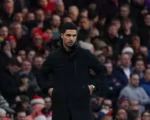The signs were all there, even from the beginning. The budding potential. The confidence. While she’d yet to truly master her craft, the vision had already been there. She was unafraid to attempt deep threes, long before the range was really there. She was creative and wanted to dish out dimes to her teammates, too. This is what stood out to Iowa associate head coach Jan Jensen when she first saw Caitlin Clark play as a sixth grader, having just joined the All-Iowa Attack AAU program in central Iowa that same year.
“It didn’t take but a second, maybe a minute,” Jensen told the Associated Press. “That little step-back sassy three, this little seventh-, eighth-grader. Yeah, she’s diff. You could just tell. They’re easy to identify but really hard to get. Everybody can see the true, true ones. The trick is to get them.”
Jensen played a major part over the years in recruiting Clark, who was intrigued by Iowa’s playing style and what head coach Lisa Bluder had done with the program and the point guard position, specifically. At Iowa, she could play freely. Fast. And, with senior Kathleen Doyle leaving for the WNBA Draft, she would be next in line to not only orchestrate the offense, but make an impact.
Years later, Jensen admitted that they talked to Clark about what she could do at the collegiate level. How she could take them to the Final Four and beyond. It matched perfectly with Clark’s own vision for herself: “I have goals for a Final Four,” she told Sports Illustrated back in 2020. “I have big hopes and dreams, which I think any person should if you’re playing basketball with them. Who wouldn’t want to win and be the best?”
It’s one thing to dream; it’s another to do it, and then a lot more. Could Clark, or anyone who knew her during those early days, have ever imagined that she’d become the greatest college basketball player Iowa has ever seen? Or, arguably, the greatest in the college game today, man or woman? What about the way she’s transcended the sport—not just women’s basketball, but the game entirely. The NCAA all-time scoring record. The logo shots. The Nike commercials. Selling out arenas like a rock star, having rappers like Travis Scott and WNBA legends like Maya Moore pull up to watch her play, the constant crowds of people wanting her autograph after games. What did Beyoncé say again? You know you’re that [girl] when you cause all this conversation. What was it Drake said, too? You know it’s real when you are who you think you are.
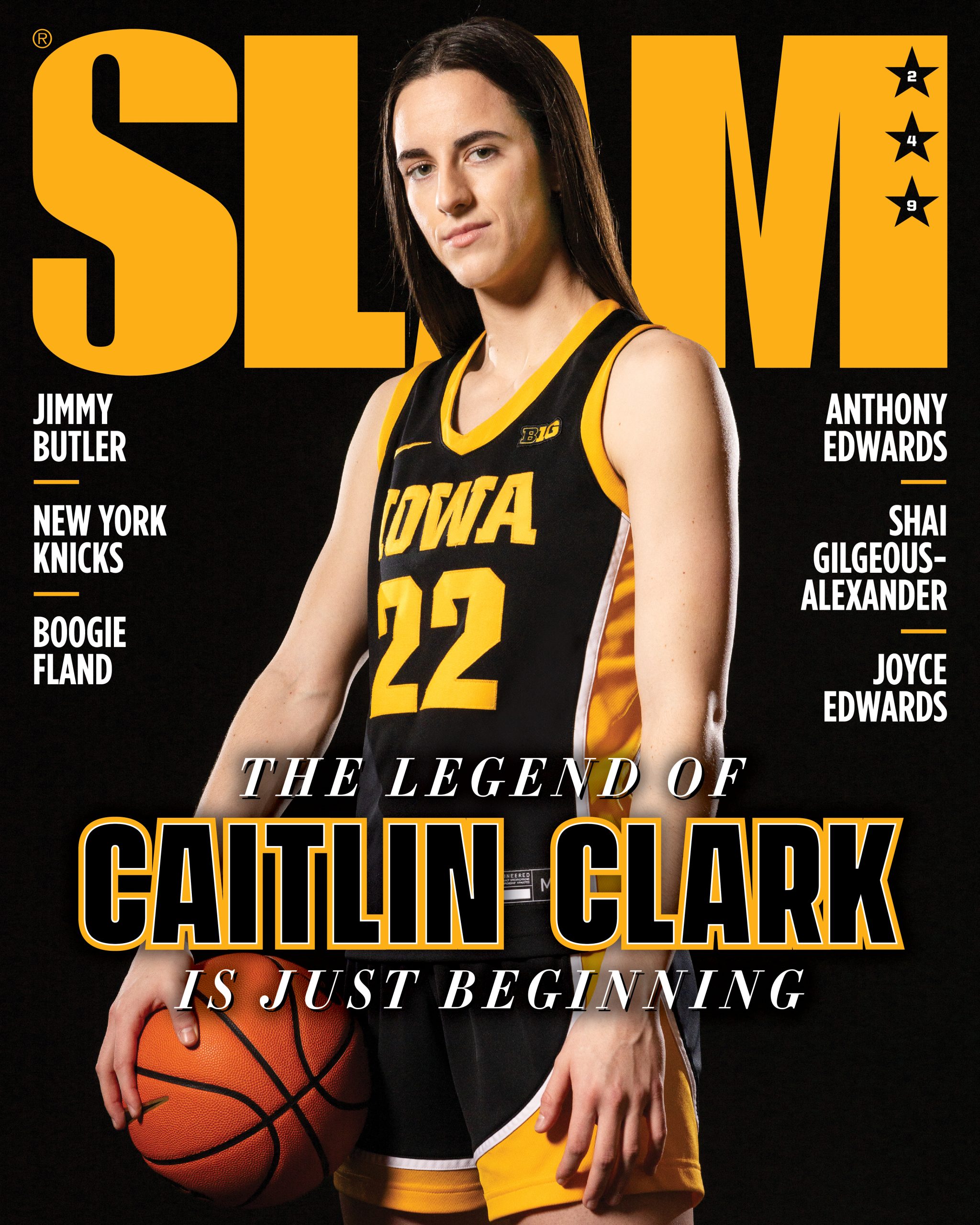
SLAM 249 featuring Caitlin Clark is available now. Shop.
Caitlin Clark is bigger than basketball, bigger than any box score, viral clip or logo shot. She’s more than the list of awards she’s won so far during her four-year career at Iowa, too. An exceptional person, woman, human, at the forefront of a very specific moment in history we’re all living in right now. A basketball Renaissance, a new era for women’s basketball. She’s not just doing it alone—there are so many stars who are changing the college basketball landscape right now, and Clark has an entire squad dominating alongside her, too.
To fully appreciate what’s happening in women’s hoops right now, we first have to acknowledge the past and the many, many women who helped paved the way before them: the legends who held the records Clark has now broken—no, not just Pistol Pete, but Lynette Woodard and Kelsey Plum. Then there’s the program Lisa Bluder has built at Iowa over the past two decades, before Clark even arrived. And what about all the Iowan women who competed in 6-on-6 basketball, including Jensen and her grandmother, long before women were even allowed to play fives.
And to even fathom what that young girl, now a woman, from West Des Moines has done, you have to go back. Here is where our story really begins…
***
If you’re new to women’s hoops, this history lesson is for you. While basketball was technically invented by a man we all know of in Springfield, MA, just down I-91 N, it was a woman by the name of Senda Berenson Abbott who first introduced the game to women at Smith College in 1892. This was 80 years before Title IX was passed, but girlie was on to something. Ditching Dr. James Naismith’s peach baskets for wastebaskets, the Smithies dropped buckets (literally) in a version of the game that divided the court into three sections. While ideologies about women—their delicacy, physical activity impacting their ability to reproduce—definitely existed back then (to keep it real, even Berenson once said that “desire to win…will make our women do sadly unwomanly things”), that was truly the catalyst.
The game only grew from there, from the east to the west, eventually reaching rural Iowa in the 1900s. There, women were already used to working on farms alongside their brothers and fathers, bailing hay and sweating, so the idea of them playing basketball wasn’t too scandalous. Rural high schools were really the first in the nation to allow girls to play 6-on-6, a version of the game that split the court in half, involved three forwards and three guards and had rules like players only being allowed to dribble twice.
It’s no coincidence that one of the most electric women’s college basketball players of today was born in the Hawkeye State. The throughlines in Clark’s story really start here.

By 1920, the first state tournament was held in her hometown of Des Moines at Drake University. The following year, Audubon beat Ottumwa in the championship thanks to an 18-point performance by the MVP, Dorcas Anderson, who just so happens to be the grandmother of Clark’s associate head coach, Jan Jensen.
More than half a century later, Jensen, too, would star on that very same court her grandmother did. By 1990, Jensen was averaging 29.6 ppgs as a senior at Drake, where she was coached by none other than newly-hired Bluder, who also played 6-on-6 basketball in high school at Linn-Mar in Marion, IA. After 10 seasons at Drake, Bluder took over at Iowa and eventually hired Jensen, first as an assistant.
“She was just tremendous. She was really just a player’s coach and intense but knew how to make it fun. Obviously, it benefited me,” Jensen told The Athletic.
Bluder’s coaching résumé at Iowa speaks for itself: with an 850-391 overall record, she’s the program’s all-time winningest coach and currently ranks 14th in NCAA DI women’s basketball history. She’s led the Hawkeyes to 21 postseason appearances, including their first-ever national championship appearance just last season. Over the years, she’s coached three Big Ten Player of the Year standouts, including Clark, who’s won it in back-to-back years, as well as Megan Gustafson and Kathleen Doyle. Her success is as much a testament to her brilliant basketball mind as it is her ability to connect with her players; as Clark told The Athletic, Bluder can strike a balance between “serious” and “fiery,” but also “fun” and “goofy.”
The program Bluder has built is now a powerhouse. This year’s squad can run opponents into the ground, shoot the ball in your face, and then stuff you on the defensive end. Not only is the team equipped with Clark but a whole roster of certified bucket getters. Look no further than Kate Martin, a 6-0 graduate student and guard who joined the program ahead of the 2019-20 season, is currently averaging double digits, including a career-high 12.9 points as well as 6.5 boards. Having grown up in a family of Hawkeye fans—Jensen is her aunt—Martin has known that she wanted to suit up in the black and gold since she was 5. Flash forward to today, and she’s emerged as a versatile standout who can do it all: block shots, finish at the rim and knock down threes from beyond the arc. But her impact on the program, and this Hawkeyes team, can’t be measured in just individual stats or accolades. Often referred to as “The Glue,” in the media, she is undoubtedly Iowa’s heartbeat and their tenacious leader.
Then there’s Gabbie Marshall, another sharpshooter with a crazy step-back game who is also Iowa’s defensive ace. Marshall is the first Iowa women’s basketball player to record 200 threes and 200 steals in a career and has been key in matchups against teams like Nebraska this season. Who could forget those final 31 seconds of the Big Ten Championship thriller when she displayed pure grit and blocked an attempted three by Nebraska’s Logan Nissley in overtime. “[Marshall is] one of the best shooters, but I don’t think she gets enough credit for her defense,” Clark said of Marshall, in The Daily Iowan. “She takes the challenge of guarding the best player every single game.”
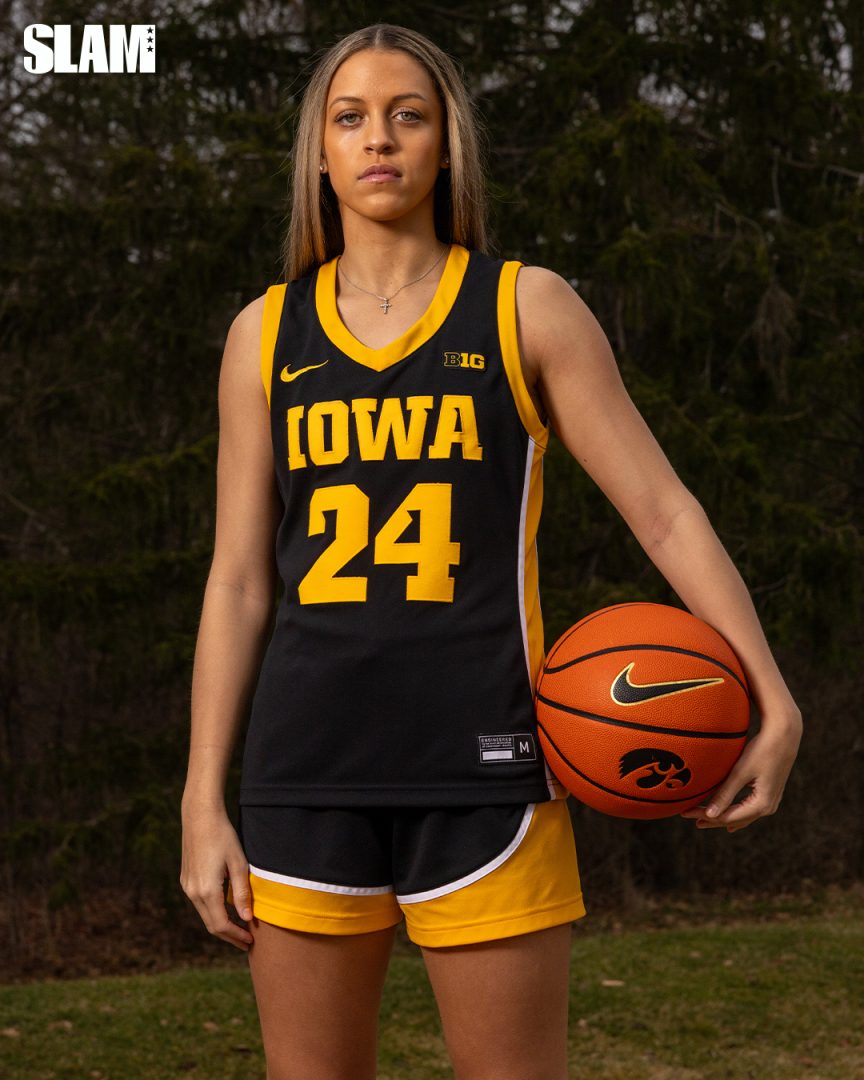
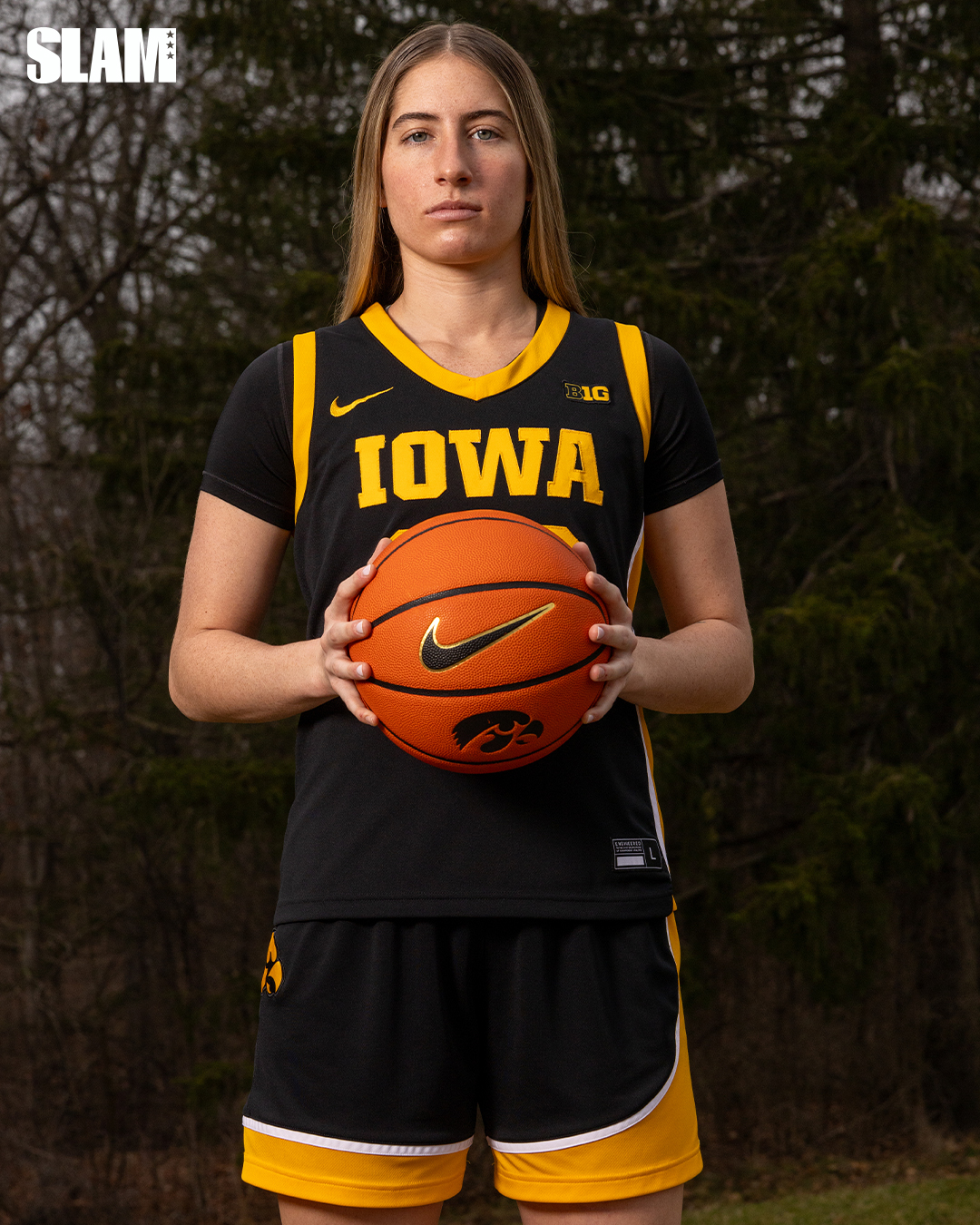
Sophomore Hannah Stuelke was also key in Iowa’s Big 10 championship win, combining with Clark for 59 points to help bring the Hawkeyes their sixth conference title. The matchup, which averaged over 3 million viewers on CBS, is now the most-watched women’s basketball game on the network since UConn-Tennessee in ’99. Stuelke’s been putting up big numbers all season long, including 47 points against Penn State in February, which is the second-most points ever scored in Carver-Hawkeye Arena. And what’s even tougher is that she did it without attempting a single three. Scary.
All of the hype and media attention we’re seeing around the program now is just part of the cultural fabric of Iowa’s renowned hoops history. Not just the program, but the entire state, which has been supporting women’s basketball since before anyone on Bluder’s current roster was even born. Girls’ basketball drew sold-out crowds of 15,000 people. People bought their tickets way in advance. Sound familiar? We’re not talking about just today, but back in the ’30s, ’40s and ’50s. When the Hawkeyes defeated South Carolina in the Final Four last year, Bluder was just as surprised to hear that Iowa legend Molly Bolin, who also played 6-on-6 and dropped 83 points as a senior at Moravia High School in the ’70s, was in attendance.
Now, imagine if Clark, or Martin, or Marshall or any star college basketball player today was playing back then. The last year 6-on-6 basketball was played was ’93, but stories about that time have been passed down through generations. Even Clark knows what type of time these women were on. “I used to joke with her and be like, Man, Caitlin, you would have been so good at 6-on-6, or, you could have just played offense,” her high school coach Kristin Meyer tells us. “[She] would have averaged over a hundred points a game, but she would have hated it because she would have had to wait on her half and she can’t go get the ball.”
Now picture this: what if those very same Iowan legends—like Denise Long (the first woman drafted by an NBA team, the San Francisco Warriors) and Deb Coates, to name a few—had what Caitlin now benefits from: social media, NIL deals, a magazine cover like this one. Clark isn’t just rewriting women’s basketball history; she’s authoring the next chapter. And she knows her history, too. “When I hear from a lot of people that played basketball, whether it was 6-on-6 however many years ago, I think they’re blown away at where women’s basketball is now and the platform we get to play on,” Clark said in USA Today. “That doesn’t come if it’s not for the people who came before us.”
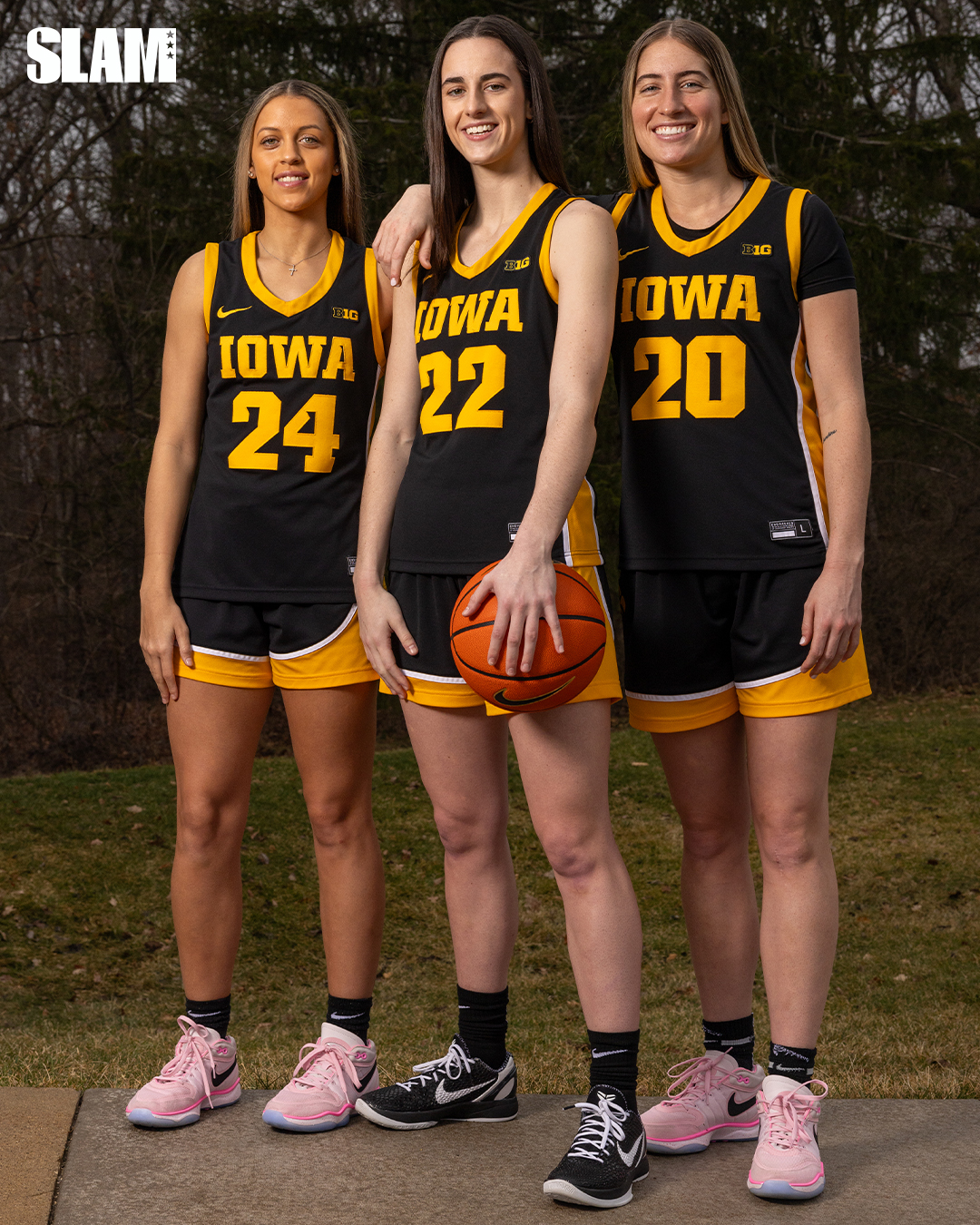
For those who study and teach women’s sports history, including Jennifer Sterling, a lecturer in the American Studies department at the University of Iowa, Clark’s place in history is monumental. “It’s important history taking place right now,” Sterling says. “What she’s done on the court and off the court, what the team has done, and the coaching and how athletics has supported this moment, I think is all really exceptional.”
And so, our story continues…
***
The “Caitlin Clark Effect” didn’t just happen when she arrived at Iowa. It’s always been something innately within her. Before she’d ever even picked up a basketball, Clark’s parents would hear from her daycare that their 2-year-old had “exceptional motor skills and coordination,” as they told HawkCentral. She was always competitive by nature, too, whether she was playing Candyland on their living room floor or hooping against her brothers. At the age of 5, her grandfather, Bob Nizzi, recalled in HawkFanatic a time when she stood up to a bullyish boy on the court and “put on the best downfield block that I have ever seen and rolled this kid out of bounds and stood over him.”
Always a gifted athlete, her father, Brent, soon noticed Clark could hit shots from 15 feet on a six-foot hoop, and when he was unable to find a girls youth basketball program for her, he put her in a boys league in second grade. They ended up winning the tournament, and as the story goes, someone’s mom was so pressed that Brent remembers them saying that “a girl shouldn’t be allowed to play in a boys tournament.”
But Clark’s always been unafraid and unapologetically herself. She’s always pushed boundaries, too. Today, we’ve seen her hit the MJ shoulder shrug after a deep three and wave off opponents like a G, things she’s been both celebrated and criticized for. “Everybody wants to critique her, everybody wants her to be nicer. They want her to be more ladylike. They want her to be less arrogant. They want her to pass. That kid loves it. She’s an entertainer. She is passionate,” Jensen told the Hawk Central in 2023.

She remembers Clark like that in high school, too. Energetic, even in the classroom. So much so that, as a junior, Meyer remembers one of Clark’s history teachers telling her that on exam days, Clark would finish her tests so quickly that they started having to send her to Meyer’s office, just to keep her preoccupied. “She always took school very seriously, but she needs to be entertained,” Meyer says.
The same goes for on the court. When they’d have conversations about her shot selection, there would be times when Meyer would say to her, Caitlin, we’re not going to do that. But did she listen? “I never really gave her the green light,” Meyer says. “She just always took it to be honest.” As a junior at Dowling, Clark averaged 32.6 ppg and dropped 60 points against Mason City HS, one off the state record. Now she’s doing the same at the collegiate level; as we head to press—and she heads to the NCAA Tournament, Caitlin’s currently averaging a career-high 31.9 ppg, has had multiple 40-plus point performances and is still setting records.
“Her game [now] is very similar to what it was when she was a freshman in high school,” Meyer says. “Her attacking the basket, her court vision and her ability [to make] just incredibly difficult passes look easy. Her range—she didn’t shoot from half court or from the logo necessarily in high school—but she was testing the boundaries a little bit as far as definitely shooting behind the high school three-point line.”
And that is exactly what makes her exceptional: natural talent and work ethic aside, Clark has always been just wired different. “Caitlin, she’s just fearless and she is confident and she is bold and she is brave and courageous,” Meyer says. “It took those natural skills, with the work ethic [she’s built], and to have the courage to just play big.”
***
As for the rest of Caitlin Clark’s story, that is still being written. By the time you’re reading this, Iowa is a No. 1 seed going into the NCAA Tournament. We don’t know yet how this college chapter will end and if she’ll end up winning her first, and the program’s first, NCAA title. Or, how the next one, her arrival to the WNBA, will begin. Will she be able hold her own in the WNBA as the Indiana Fever’s projected No. 1 pick? Regardless of what happens, her impact won’t be tainted in the slightest. Longtime college basketball fans, new fans, young fans, are all enamored by her. At Dowling, Meyer’s current players hear stories about her 60-point game, her competitiveness and her approach to practice and commitment to making her teammates better.
“Whenever she’s stopped by [the school], the girls are just nervous around her. They almost feel like she’s famous, which to me is so weird because she’s just Caitlin,” Meyer says.
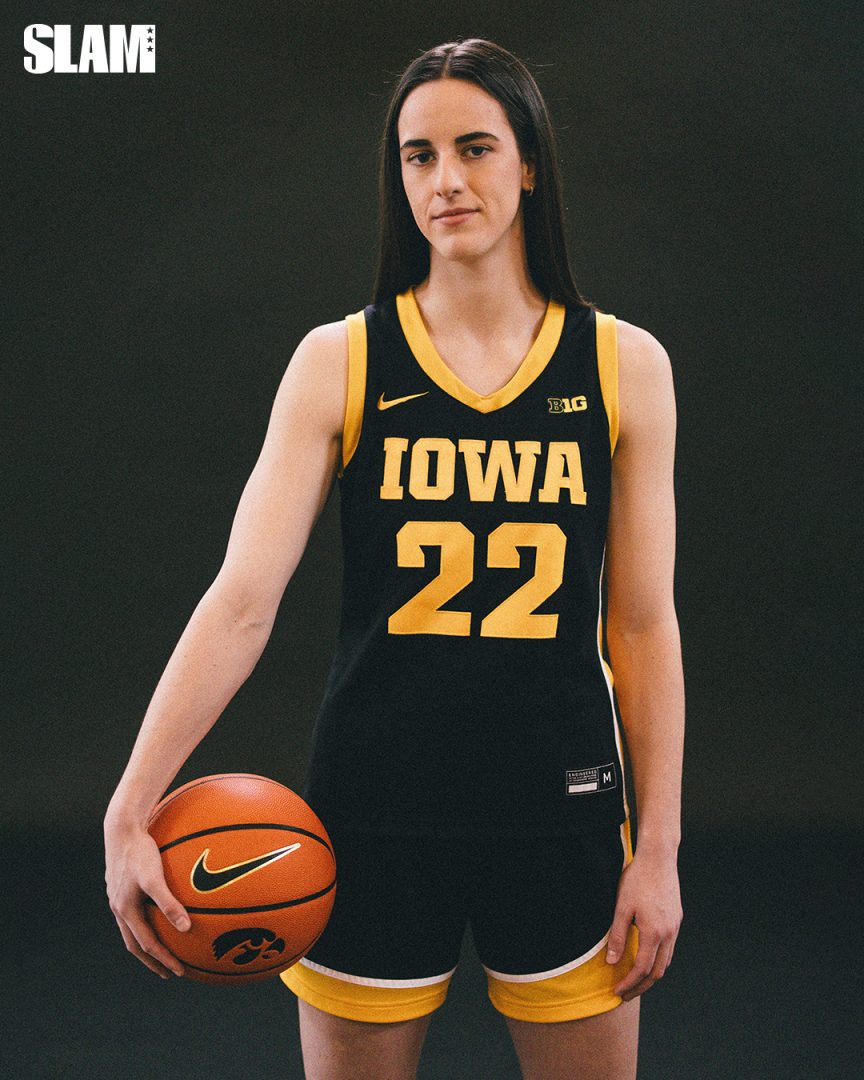
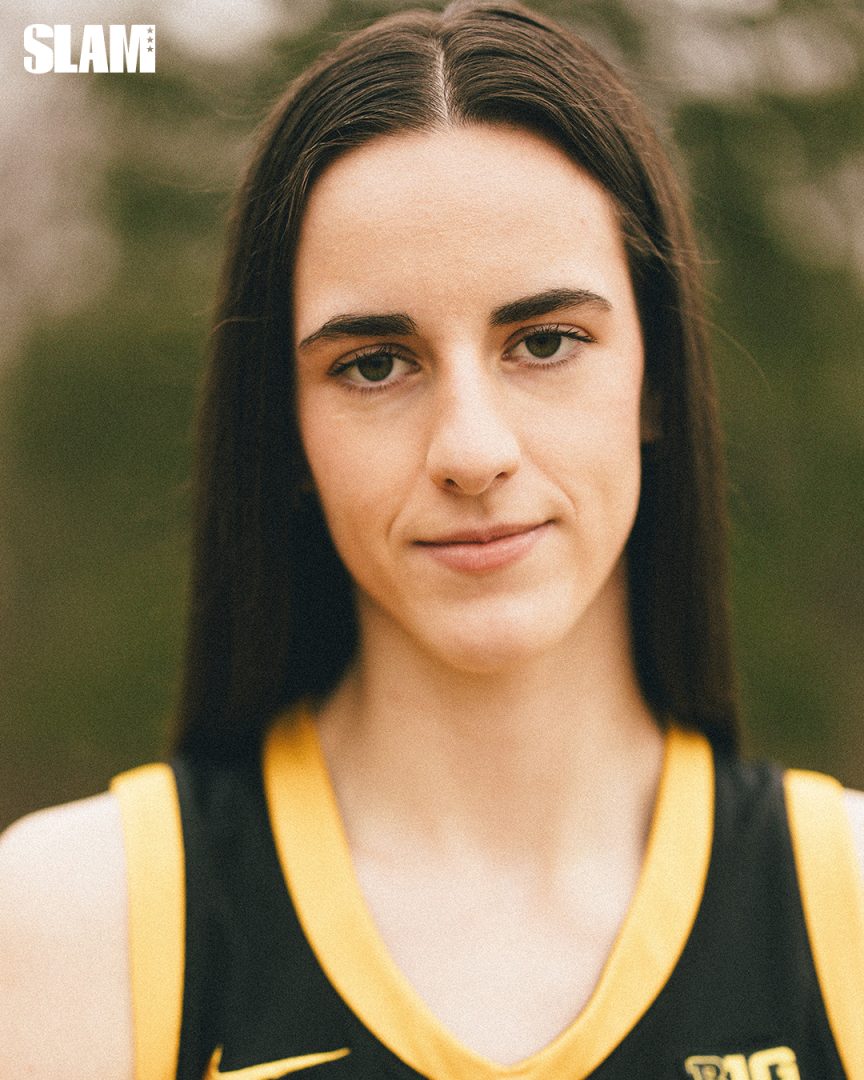
Some call Clark the “female Stephen Curry,” while others haven’t stopped comparing her to Pete Maravich since she broke his all-time NCAA scoring record this year. But Clark made it clear to the media after she broke the record that she doesn’t want to be remembered for just her accolades, but rather, “for the way I played with a smile on my face, my competitive fire.”
And that is her legacy. That is what we’ll be talking about in the years to come—Caitlin’s passion, her talent, what she’s done for women’s basketball. When we asked Sterling about Clark’s impact—and whether we can expect a chapter about her in seminar syllabuses one day (the answer is yes)—our theory was proven correct: the legend of Caitlin Clark is just beginning. It’s all part of a larger history.
“Hopefully this is the beginning of more amazing things to come,” Sterling says. “And the culmination of the many changes in women’s sport that have happened along the way.”
Portraits by Atiba Jefferson.
The post The Legend of Caitlin Clark: How the Superstar is Writing the Next Chapter in Iowa Women’s Basketball History appeared first on SLAM.



